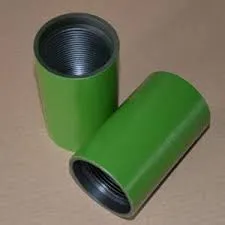- Afrikaans
- Albanian
- Amharic
- Arabic
- Armenian
- Azerbaijani
- Basque
- Belarusian
- Bengali
- Bosnian
- Bulgarian
- Catalan
- Cebuano
- Corsican
- Croatian
- Czech
- Danish
- Dutch
- English
- Esperanto
- Estonian
- Finnish
- French
- Frisian
- Galician
- Georgian
- German
- Greek
- Gujarati
- Haitian Creole
- hausa
- hawaiian
- Hebrew
- Hindi
- Miao
- Hungarian
- Icelandic
- igbo
- Indonesian
- irish
- Italian
- Japanese
- Javanese
- Kannada
- kazakh
- Khmer
- Rwandese
- Korean
- Kurdish
- Kyrgyz
- Lao
- Latin
- Latvian
- Lithuanian
- Luxembourgish
- Macedonian
- Malgashi
- Malay
- Malayalam
- Maltese
- Maori
- Marathi
- Mongolian
- Myanmar
- Nepali
- Norwegian
- Norwegian
- Occitan
- Pashto
- Persian
- Polish
- Portuguese
- Punjabi
- Romanian
- Russian
- Samoan
- Scottish Gaelic
- Serbian
- Sesotho
- Shona
- Sindhi
- Sinhala
- Slovak
- Slovenian
- Somali
- Spanish
- Sundanese
- Swahili
- Swedish
- Tagalog
- Tajik
- Tamil
- Tatar
- Telugu
- Thai
- Turkish
- Turkmen
- Ukrainian
- Urdu
- Uighur
- Uzbek
- Vietnamese
- Welsh
- Bantu
- Yiddish
- Yoruba
- Zulu
casing coupling dimensions
Understanding Casing Coupling Dimensions A Comprehensive Guide
Casing coupling dimensions are critical elements in the drilling industry, where the integrity of operations relies heavily on the proper specifications of these components. A casing coupling serves as the connector between sections of casing, which are tubes used to line the borehole drilled in the earth. These couplings ensure that the casing remains structurally sound and secure throughout the drilling process. This article aims to explore the importance, specifications, and dimensions of casing couplings, ultimately helping industry professionals make informed decisions regarding their use.
Importance of Casing Couplings
Casing couplings play a pivotal role in maintaining the stability and safety of the borehole. When drilling into various formations, it is crucial that operators utilize equipment that withstands high pressures and temperatures. Casing couplings must be robust enough to resist the forces encountered during the drilling phase and the subsequent production of resources, such as oil or natural gas. Additionally, improper specifications can lead to catastrophic failures, including blowouts or flooding, which can pose severe safety hazards and lead to significant financial losses.
Casing Coupling Specifications
Casing couplings are engineered to meet specific standards, which can vary based on the application and environment. Generally, they are manufactured from high-strength steel to provide the necessary durability. Common specifications for casing couplings include the American Petroleum Institute (API) standards, which outline essential requirements for dimensions, thread types, material properties, and performance characteristics.
1. Thread Types Casing couplings are available in various thread configurations, including API short round threads and other premium threaded connections. The choice of threads can significantly affect the coupling's performance under different conditions. It is crucial that thread design ensures a tight seal to prevent potential leaks.
2. Material Grade Casing couplings are classified based on material grade, such as J55, K55, L80, N80, and P110. The grade indicates the yield strength of the material and its overall suitability for specific drilling environments. High grade materials are typically used in deeper or more challenging drilling scenarios, where external pressures are higher.
casing coupling dimensions

3. Dimensions The dimensions of casing couplings are defined by their outer diameter (OD), inner diameter (ID), and total length. The most common sizes for casing couplings usually range from 4.5 inches to 20 inches in OD, although custom sizes can be manufactured to meet specific project requirements. These dimensions are critical as they affect the overall strength and performance of the drilling string.
Understanding Casing Coupling Dimensions
To better understand casing coupling dimensions, consider a typical casing coupling for 9 5/8” casing. The coupling length commonly measures around 10 inches, with an OD of approximately 10.75 inches. The wall thickness can vary depending on the material grade and specific design requirements, but commonly ranges from 0.5 to 0.75 inches. These dimensions allow for efficient load distribution while also permitting easy handling and installation on site.
Industry Trends and Innovations
In recent years, advancements in technology have resulted in the development of new materials and manufacturing processes for casing couplings. Innovations such as corrosion-resistant alloys and enhanced threading methods have improved the performance and longevity of these critical components. Furthermore, the integration of digital tools for precise measurements and quality control has elevated the standard of casing coupling production, ensuring operators receive reliable and high-performance equipment.
Conclusion
Casing coupling dimensions are essential to the success and safety of drilling operations. Understanding their specifications, materials, and industry standards can help professionals choose the most appropriate couplings for their projects. As technology advances and improves manufacturing processes, the future of casing couplings looks promising, paving the way for safer and more efficient drilling practices. By prioritizing quality and precision in selecting casing couplings, the drilling industry can continue to meet the demands of an evolving market.
-
Tubing Pup Joints: Essential Components for Oil and Gas OperationsNewsJul.10,2025
-
Pup Joints: Essential Components for Reliable Drilling OperationsNewsJul.10,2025
-
Pipe Couplings: Connecting Your World EfficientlyNewsJul.10,2025
-
Mastering Oilfield Operations with Quality Tubing and CasingNewsJul.10,2025
-
High-Quality Casing Couplings for Every NeedNewsJul.10,2025
-
Boost Your Drilling Efficiency with Premium Crossover Tools & Seating NipplesNewsJul.10,2025







